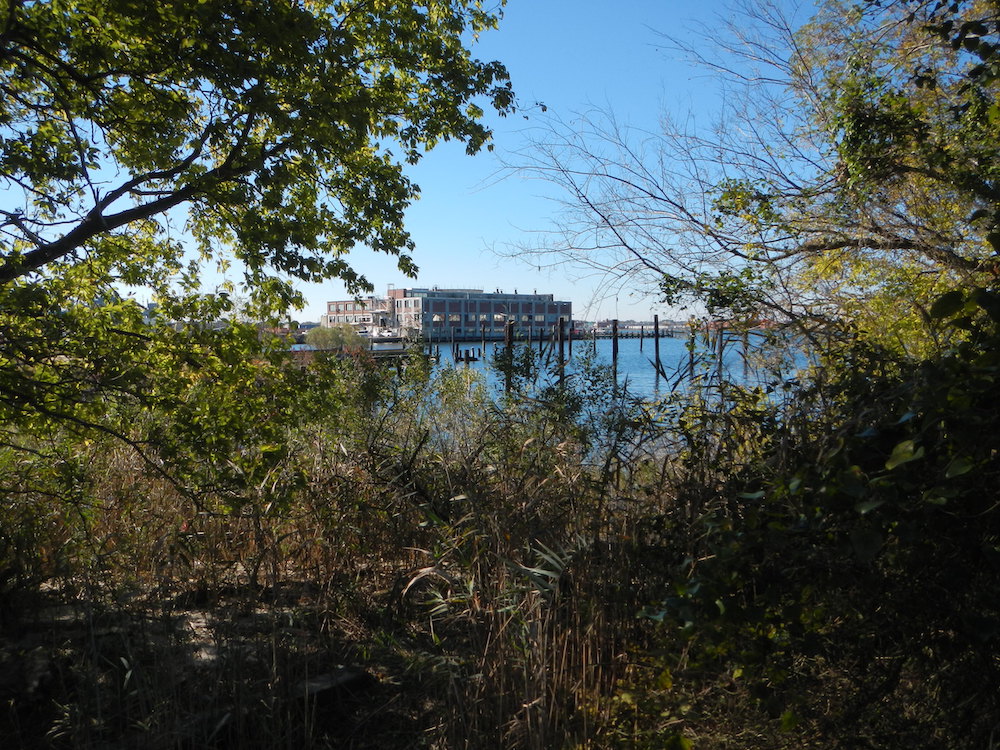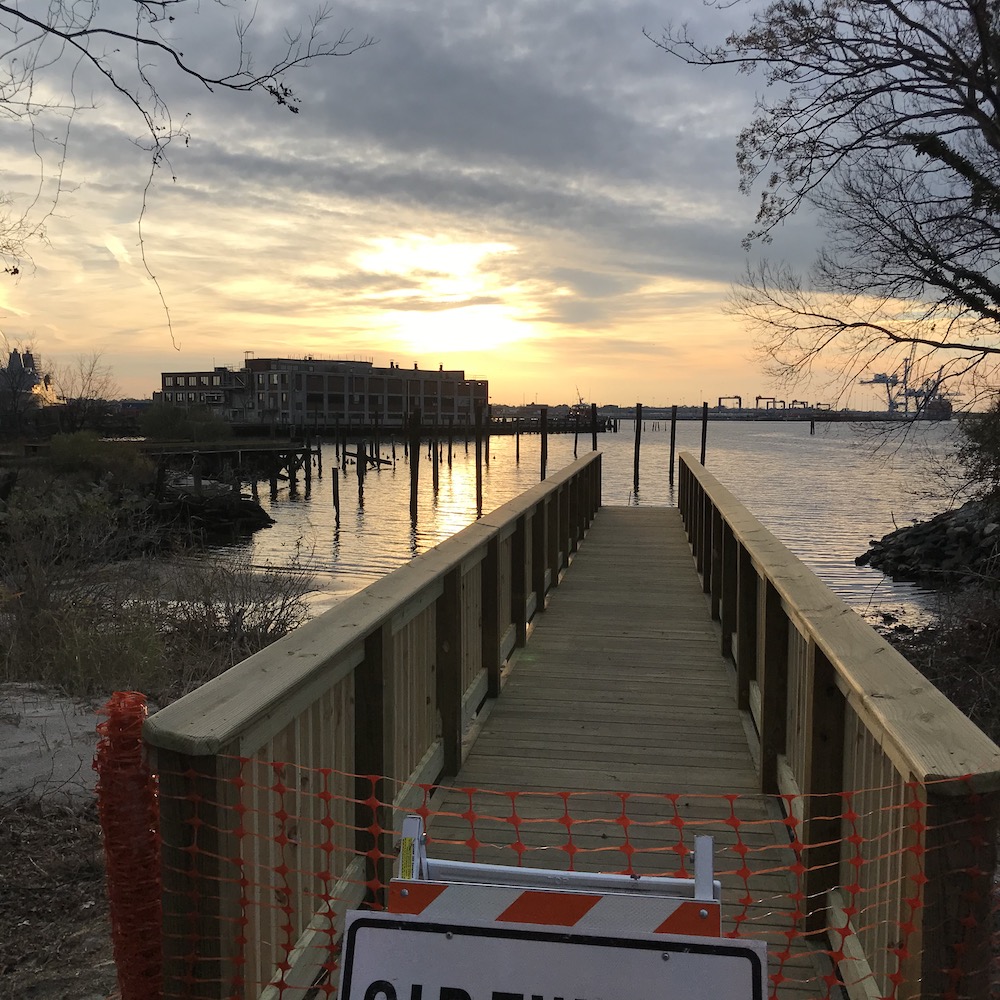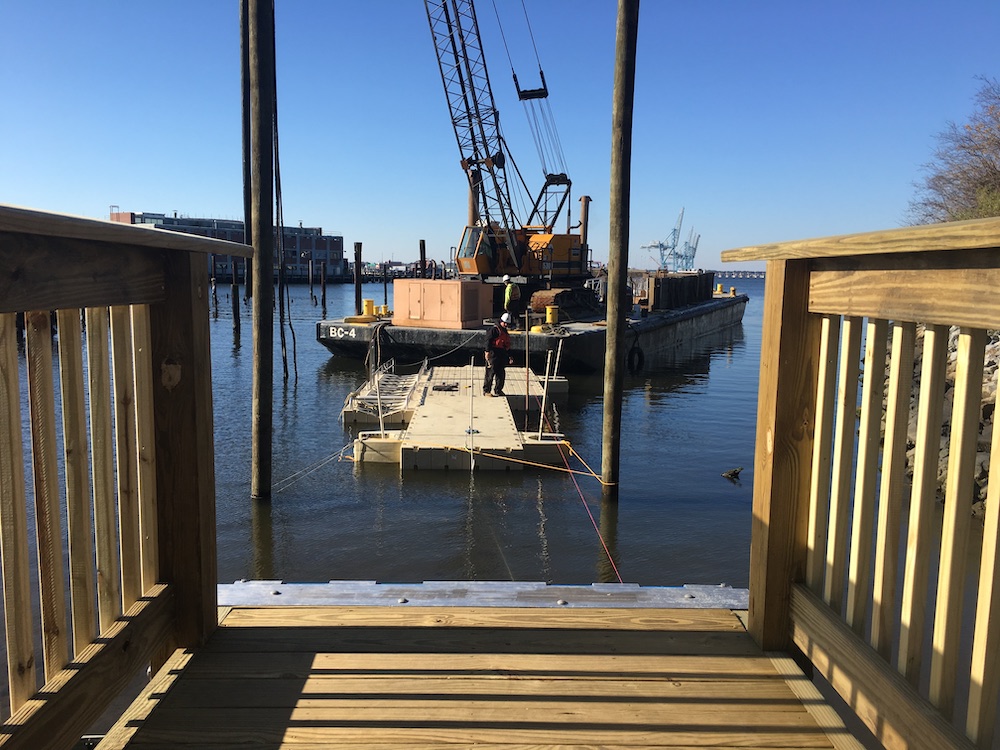The idea for a community trail began in 1994.
The Elizabeth River Trail’s history starts with a shared vision that brought together the West Ghent Civic League, Norfolk Historical Society, Norfolk Southern Corporation, and the City of Norfolk. The West Ghent Civic League was interested in establishing Plum Point Park on a former dump site and devising a walking route linking it to the West Ghent neighborhood. The Norfolk Historical Society wanted to improve the accessibility and visibility of historic Fort Norfolk. Overlooking the Elizabeth River, Fort Norfolk dates back to 1807 and served a key role in the War of 1812 when its position successfully defended the city from the British.


Atlantic City grew up around Fort Norfolk, with a district of homes surrounding its waterfront businesses. It was once a thriving but hard-edged community on the Elizabeth River’s waterfront, supporting an icehouse, a knitting factory, cotton warehouses, and lumber mills. Atlantic City became part of Norfolk in 1890 and was reached by rail in the early 1900s as the Norfolk and Western Railway extended its Atlantic City Spur along the waterfront near Fort Norfolk. Atlantic City became a target for wholesale urban renewal in the 1950s and much of the neighborhood was eradicated. By the early 1990s, Norfolk and Western Railway had become Norfolk Southern Corporation and the tracks of the Atlantic City Spur stood idle. Fort Norfolk, however, remained largely intact and the area was prime for redevelopment.
After three unsuccessful applications for federal alternative transportation funding, in October 1999 Norfolk Southern agreed to donate 3,500 feet of its Atlantic City Spur to the City of Norfolk for the purpose of creating the first segment of the Elizabeth River Trail. This prompted the formation of the Elizabeth River Trail Committee, composed of city staff, elected officials, and private citizens, to plan the segment. Norfolk Southern’s donation also paved the way for a $151,000 federal transportation grant from the Virginia Department of Transportation (VDOT) in June 2000. The initial segment of the Elizabeth River Trail opened in 2003 along this 3,500 feet of railroad right of way between Southampton Avenue next to Fort Norfolk in Atlantic City, and Claremont Avenue in what is now called Chelsea.


The quick success of the Atlantic City Spur segment led to efforts to expand the Elizabeth River Trail. The Elizabeth River Trail Committee’s initial focus was extension to the north along Redgate Avenue and the edge of the West Ghent neighborhood, through Jeff Robertson Park to Hampton Boulevard where it passes under the Norfolk Southern tracks. Subsequently, the trail extended further north through the Lambert’s Point neighborhood to Old Dominion University, Larchmont, Lochaven, and Naval Station Norfolk, south through Atlantic City to Downtown, and then east to Harbor Park. The Sentara Loop was added in 2012, when work on the Midtown Tunnel temporarily shut down the Fort Norfolk section of the trail. A formal resolution ratified by Norfolk City Council extends the vision of the trail to Norfolk State University, and along the former Norfolk Southern right of way to Virginia Beach – a vision the Elizabeth River Trail Foundation hopes to make reality.
Thanks to continued efforts of the Foundation, the Elizabeth River Trail Committee, the City of Norfolk, and ongoing support from VDOT and federal transportation funding, today the Elizabeth River Trail runs for 10.5 miles between Norfolk State University and Norfolk International Terminals. Highlights along the trail include Town Point Park, the USS Wisconsin, Fort Norfolk, Plum Point Park, and several of Norfolk’s historic neighborhoods. Much of this trail is off-road, and efforts to get more of it off road continue. The trail occupies in part a railroad right of way and yet incorporates a sea-faring history as it follows Norfolk’s varied and highly interesting waterfront.

